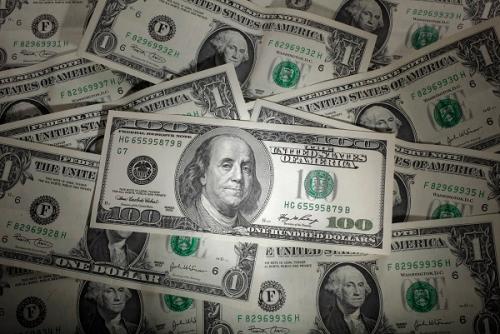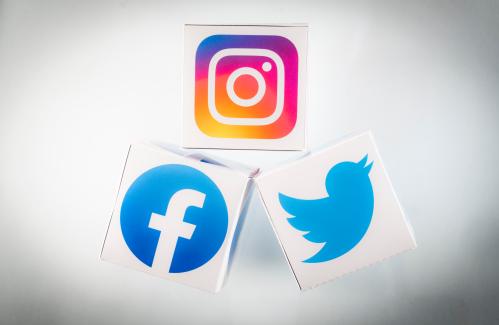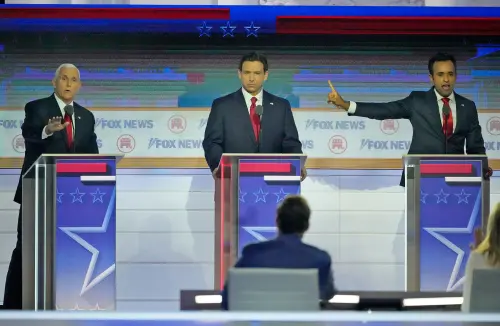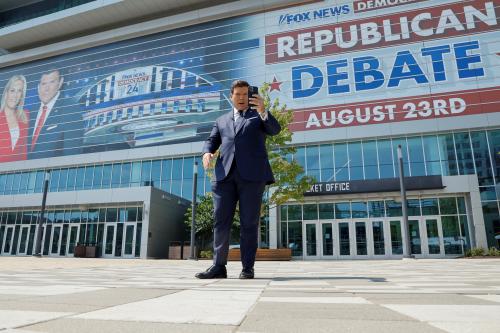In this series, we track key election metrics for presidential candidates throughout the campaign period known as the “invisible primary.”
The list of presidential candidates included is based on the candidates listed in AP News, The Washington Post, The New York Times, and Politico’s descriptions of the 2024 field.
This is our fourth essay on elements of the invisible primary. In this one, we take a look at how often the candidates are mentioned in the media. This is one of the most important metrics we can follow since social media presence and money (which were covered in previous blogs) are, more often than not, fueled by media mentions.1
The following table shows the number of times a candidate’s name was mentioned over 14 consecutive days at the end of July and beginning of August (with the exception of August 7 — a day on which we had technical problems). Reading across you can see the number of media mentions from 108 news sources by day, and at the end of the row you can see the average number of media mentions per day.
Among the Democrats, President Joe Biden has by far and away the most coverage — not exactly surprising for a sitting president of the United States. Far behind him are media mentions for Robert F. Kennedy Jr. — the son of a famous Attorney General and Senator who was assassinated. Were it not for his link to one of America’s most famous political families, it is unlikely that Kennedy, who made his reputation as an anti-vaccine advocate, would have even that many headlines. The third candidate, Marianne Williamson, has the fewest mentions — a reflection of the fact that she is not being taken very seriously. She is also far behind in fundraising and in social media.
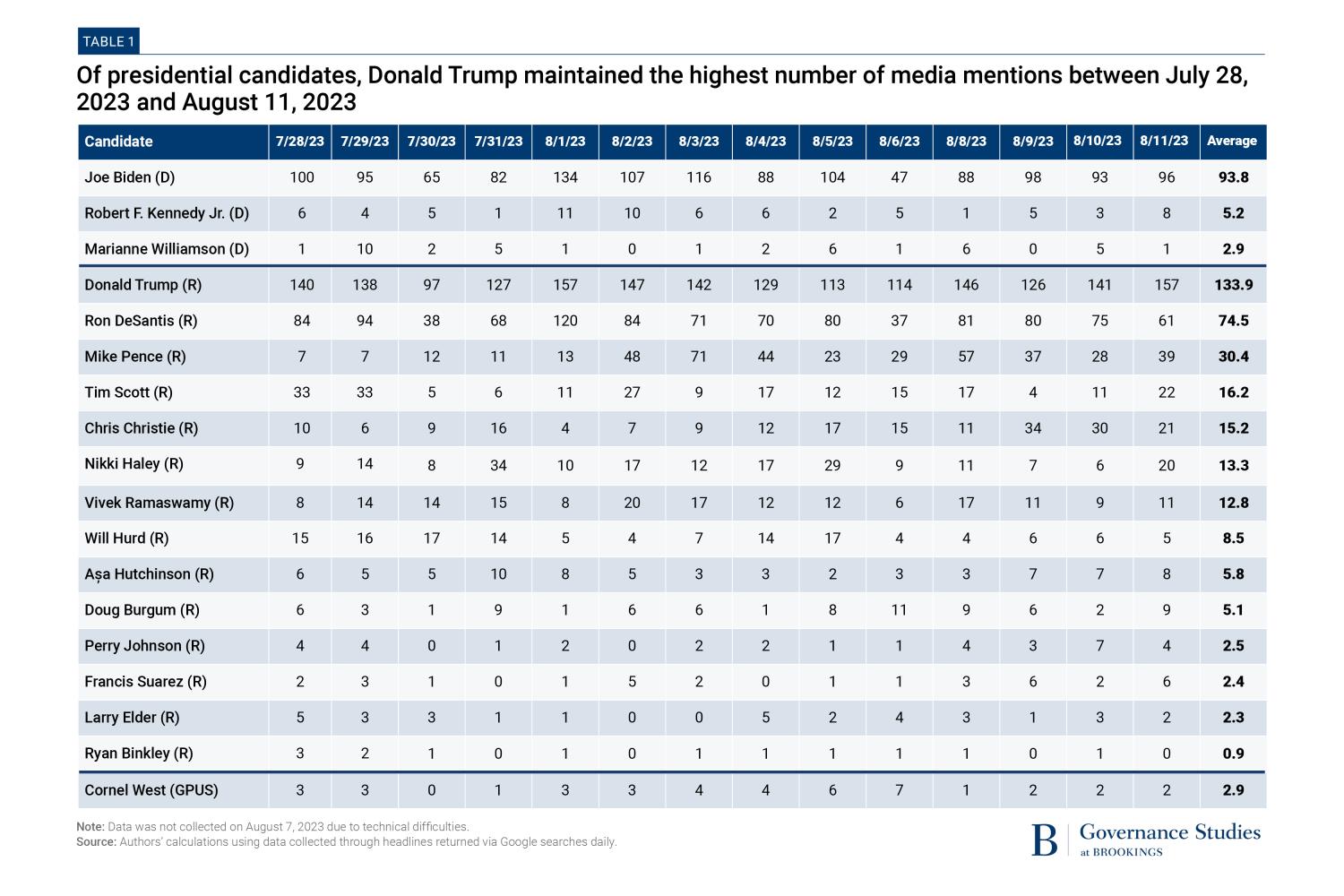
Among the Republicans, former President Donald Trump is the proverbial “elephant in the room” — the most talked about and written about candidate by a wide margin. Of course, not all publicity is good publicity, and a large amount of the coverage of Trump over this period of time deals with his indictments and what it means for his political future. He was indicted for his role in the January 6 insurrection on August 1 and for interfering with the vote in Georgia on August 14 — so this period of time covers news and commentary around the August 1 indictment and the run up to the August 14 indictment. The oversized presence of Trump (he gets more headlines than the incumbent President of the United States) in the media is just one more measure of how he dominates not just the Republican race but the entire coming presidential election.
The next most mentioned candidate is Florida Governor Ron DeSantis, a reflection of the fact that early on the press anointed him as a fresher, newer Donald Trump. And yet, this early attention has been a mixed blessing. While it allowed him to raise substantial amounts of money and establish a solid social media presence, it has also come with stories critical of him for being “unlikeable” and how his campaign has stalled in his effort to replace Trump. Over this period of time, multiple polls showed DeSantis’s unfavorable ratings continuing the uphill trajectory that they had been on since the spring.
Third in amount of media mentions is the constantly forgotten candidate — former Vice President Mike Pence. Some of his attention has been due, no doubt, to his role in standing up to Trump on January 6 — a position that has hurt him with some Republican voters. While Pence is way down in polls, he is a former Vice President with strong ties to the evangelical core of the Republican party. Pence could well turn out to be the Joe Biden of the invisible primary, a candidate who was pronounced dead at many points and then had a surprising rebirth once the voting started.
Pence could well turn out to be the Joe Biden of the invisible primary, a candidate who was pronounced dead at many points and then had a surprising rebirth once the voting started.
That’s because, as with Biden, Republican voters may come around at the end to ask themselves, as my colleague Jonathan Rauch did in a recent article in The Atlantic, “Why Not Pence?” Of all the candidates who have chosen what we referred to as “the murky middle” lane to the Republican nomination — critical of Trump and his actions but loyal to “Trumpism”— Pence may have the best shot at pulling off a difficult strategy.
Lagging far behind in media coverage are Sen. Tim Scott (R-SC), former Governor Chris Christie (NJ), former Governor Nikki Haley (SC), and businessman Vivek Ramaswamy. Scott has gotten some good reviews for his inspiring personal story and his Reagan–like optimism. Christie has chosen to be the most vocal all-out opponent of Trump, and he does it with great style and enthusiasm — so, he gets a fair amount of attention. Haley has simply been in it for a long time, as has Ramaswamy.
The other candidates are struggling for headlines, which means they will struggle for social media presence and money as well. At this point in the invisible primary, what everyone is looking for comes down to two simple questions. Who will come in second in the early contests, and will others unite around the second place winner?
-
Acknowledgements and disclosures
Thanks to Cambron Wade, Anna Heetderks, Jordan Muchnick, and Adelle Patten for their work on data collection and data visualization.
-
Footnotes
- The media mentions data represents the approximate number of times a candidate is mentioned in Google News across 108 different news sources in the past 24 hours. The list of news sources encompasses a variety of national and higher-circulation local news sources, including newspapers, magazines, TV networks’ websites, and web-based outlets. The list also includes major newspapers in Republican early primary states — New Hampshire, Iowa, and South Carolina. The data is collected from Google News at the same time every day.


